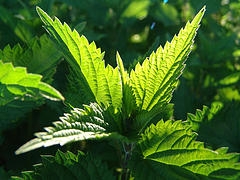 The 6th Annual Galiano Nettlefest Community Potluck will take place on March 30th.
The 6th Annual Galiano Nettlefest Community Potluck will take place on March 30th.
Stinging nettle (Urtica dioica) is a herbaceous flowering perennial, native to North America, Asia Europe, and northern Africa. The plant has long been used as a medicine and a vitamin-rich food source. It has a pleasant, grassy flavour, with a slightly metallic tang, similar to spinach. In spring, stinging nettle contains up to 25% protein, dry weight, which is high for a leafy green vegetable.
After soaking or heating to remove the sting, the leaves can be dried, puréed, or substituted for spinach in any recipe. Nettle soup is a common use of the plant in northern and eastern Europe.
The plant has hollow hairs on its leaves and stems which act like needles, injecting histamine and other chemicals that sting on contact. If you do get stung, a weed that often grows near stinging nettles, yellow dock (Rumex crispus), can be used as a home remedy. An ancient British charm goes: “Nettle out, dock in, dock remove the nettle sting.”
Nettles grow 3-7 feet tall in the summer and die back in winter. They spread by seeds and runners. Nettles are considered invasive plants, but that also means they’re easy to find and easy to propagate. The plant grows quickly and attracts beneficial insects such as butterflies. It likes partial to full sun and is drought tolerant.
Nettles contain a lot of nitrogen, so they are used as a compost activator and to make liquid fertilizer. They are one of the few plants that can flourish in soils rich in poultry droppings.
Kathy Benger’s Nettle Beer Recipe
Into a pan holding one and half gallons, pack as many young fresh nettle tops as you can, with three young dandelion plants, leaves and roots alike, but with no flower-buds. Now wash nettles and dandelions thoroughly in salted water and scrub the dandelion roots free of fibres. Then rinse them all free of salt and put them back into the pan with the rind and juice of two lemons, half a pound of rhubarb sliced and bruised and three or four pieces of root-ginger about the size of hazel nuts. Then put in as much cold water as the pan will hold, set it on the stove and bring slowly to the boil. Simmer for half an hour.
Then put into a basin one pound of demerara sugar with an ounce of cream of tartar, and strain on to it the infusion in the pan, pressing the residue lightly to express all the moisture. When, in a few hours, the yeast has multiplied and there is a good ferment working, strain off the beer into strong screw-topped bottles and screw down firmly. The beer will be ready in five days.
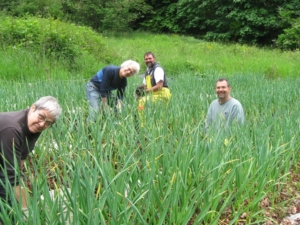 Sunday’s work party went very well – we weeded, made squash mounds, sprayed compost tea, and covered paths and borders with cardboard. The garlic looks great, the phacelia is doing well, and we’re keeping our fingers crossed for the rye.
Sunday’s work party went very well – we weeded, made squash mounds, sprayed compost tea, and covered paths and borders with cardboard. The garlic looks great, the phacelia is doing well, and we’re keeping our fingers crossed for the rye.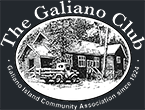
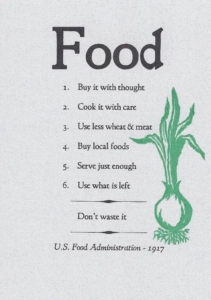 It is interesting how we are swept off of our feet with new ideas. We change perspective, get inspired and attempt to live our lives more in alignment with our belief. Keeping these ideas alive and fresh is when the challenge really begins. Take FOOD SECURITY and SUSTAINABILITY: These are concepts we have batted around for a few years now, yet when the store shelves are full, plus we are pressed for time with jobs, it is hard to sustain interest in these objectives.
It is interesting how we are swept off of our feet with new ideas. We change perspective, get inspired and attempt to live our lives more in alignment with our belief. Keeping these ideas alive and fresh is when the challenge really begins. Take FOOD SECURITY and SUSTAINABILITY: These are concepts we have batted around for a few years now, yet when the store shelves are full, plus we are pressed for time with jobs, it is hard to sustain interest in these objectives.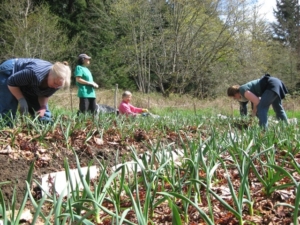 Our next work party is next Sunday, April 14, at 10:30am.
Our next work party is next Sunday, April 14, at 10:30am. COME JOIN US AT 9:30 MARCH 8TH AT THE END OF GEORGIA VIEW RD. (ENTRANCE TO THE COMMUNITY FOREST) TO HEAR WHAT HERB HAMMOND, KEITH ERICKSON AND OTHER LOCALS HAVE RECOMMENDED FOR IMPROVING THE FOREST AND REMOVING WOOD. REFRESHMENTS WILL BE AVAILABLE.
COME JOIN US AT 9:30 MARCH 8TH AT THE END OF GEORGIA VIEW RD. (ENTRANCE TO THE COMMUNITY FOREST) TO HEAR WHAT HERB HAMMOND, KEITH ERICKSON AND OTHER LOCALS HAVE RECOMMENDED FOR IMPROVING THE FOREST AND REMOVING WOOD. REFRESHMENTS WILL BE AVAILABLE.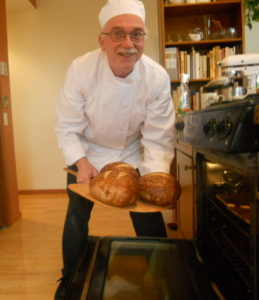 Class on Sunday, April 7th from 11am till 5pm
Class on Sunday, April 7th from 11am till 5pm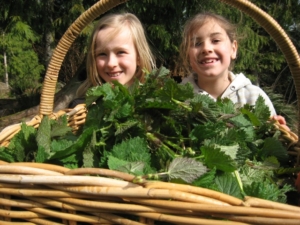 This years Nettlefest Potluck will be happening on March 30th at 5:30pm at the South Community Hall. This year we have a special request – please wear green to the dinner!!
This years Nettlefest Potluck will be happening on March 30th at 5:30pm at the South Community Hall. This year we have a special request – please wear green to the dinner!!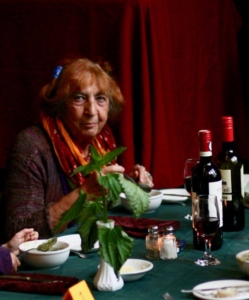 Come join Hugette, from La Berengerie, and learn how to make Couscous Royale, atraditional and richly-spiced North-African dish that is bursting with flavours.
Come join Hugette, from La Berengerie, and learn how to make Couscous Royale, atraditional and richly-spiced North-African dish that is bursting with flavours.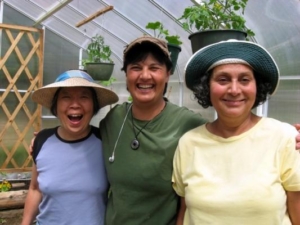 Everyone is welcome to jump-start the Gardening year in the community greenhouse.
Everyone is welcome to jump-start the Gardening year in the community greenhouse.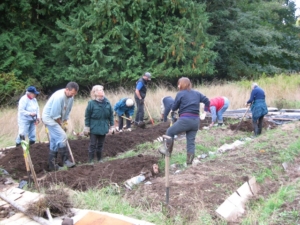 We’ll be sowing the fallow bed in rye and phacelia as cover crops. We’ll also be amending the soil, so please bring any organic material you can contribute: seaweed, compost, nettle stalks, leaves, compost tea, ash, lime, manures, grass clippings, cardboard, newspaper, etc. are all welcome!
We’ll be sowing the fallow bed in rye and phacelia as cover crops. We’ll also be amending the soil, so please bring any organic material you can contribute: seaweed, compost, nettle stalks, leaves, compost tea, ash, lime, manures, grass clippings, cardboard, newspaper, etc. are all welcome! The 6th Annual Galiano Nettlefest Community Potluck will take place on March 30th.
The 6th Annual Galiano Nettlefest Community Potluck will take place on March 30th.